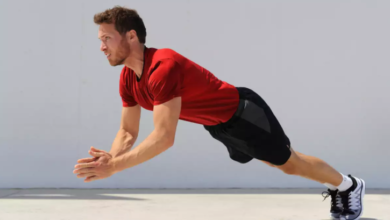Tips for running a faster 5K

After a few years of regular running, you’ve completed a few 5-kilometre fun runs. It’s time to take this distance more seriously. Tips to help you break your own 3.1-mile record are included in this guide.
During a Workout
If you’d like to run a faster 5K, you should work on your speed. If you want to run a faster 5K in four weeks, follow the advice of Coach Andrew Kastor, who suggests including 80-meter sprints in your training regiment. Keep in mind that sprinting can be tough on the body, so start with shorter sprints and gradually work your way up to the full 80 metres.
When training, incorporate short uphill sprints into your routine to build speed and muscle power, as well as increase flexibility in your muscles and tendons, which lowers your risk of sustaining injury. Avoid long, steep hills in your training (about six to 10 per cent incline). Immediately walk backwards down the hill to avoid putting pressure on the knees. Repeat this process until you can run eight 10-second sprints in a row. If you want stronger, faster legs, then this is your best bet.
Include leg and core-targeting exercises into your workout routine: Running on its own won’t help you get faster. To improve the effectiveness of your actions, you should work on building up the muscles that move you. Incorporate these three booty moves from celebrity trainer David Kirsch into your routine, along with a variety of other exercises.
The route should be familiarised with: Get a detailed map of the 5K course, and if possible, practise running the route in an open area (like a neighbourhood or a wooded trail). The more familiar you are with the course ahead of time, the more confident you will be and the more competitive you will be compared to other runners.
In The Days Leading Up To The Event
Eat a low-fibre meal that includes protein and carbohydrates that are easily absorbed. Eat it at least one to two hours before your run and keep the caloric intake under 200. Peanut butter on a banana is my favourite, but find what works best for your body. Do not run until you’ve consumed 14 to 20 ounces of fluid, at least three hours in advance.
A brisk walk or light jog 25 minutes before the race will not only prevent injury, but will also ensure that your muscles are ready to go when it’s time for the race to begin.
Begin with a bang: Right you are. Research shows that if you start the race a little faster than you normally would, you’ll end up with a faster time overall.
Proper technique is essential for climbing. Remain calm and collected at all times, with your hands and shoulders relaxed (no clenched fists). Keep your feet close to the ground by taking shorter strides and pushing off and up, not into the hill, to add spring to your movements.
Pump your arms to add force to each step instead of relying solely on your legs. Don’t look down at the ground; instead, look up the hill in the direction you want to go. It motivates you to keep going because you can see how far you’ve come. Slowly and steadily make your way up the first two-thirds of the hill, and then pick up the speed as you near the summit.
Allow your body to take a longer stride with each step on the downhills. Keeping your legs relaxed is key to landing softly and avoiding injury to the knees and other joints.
Moving around a small space should be done as quickly and painlessly as possible. This can be accomplished by allowing gravity to naturally pull you forward by shifting your shoulders slightly in front of your hips. Increase your pace on flat sections of the race without exerting much muscular effort by taking advantage of the forward momentum you’ve generated so far. Track course turns and moves over as quickly as possible to hug the curves, which will cut down on time and distance.
In 5Ks, miles aren’t always marked, so knowing the course ahead of time is key to finishing strong. As soon as you cross the halfway point in the race, begin to increase your speed (passing runners will give you an added boost of confidence). Sprint to the finish line with everything you’ve got in the final quarter-mile.



